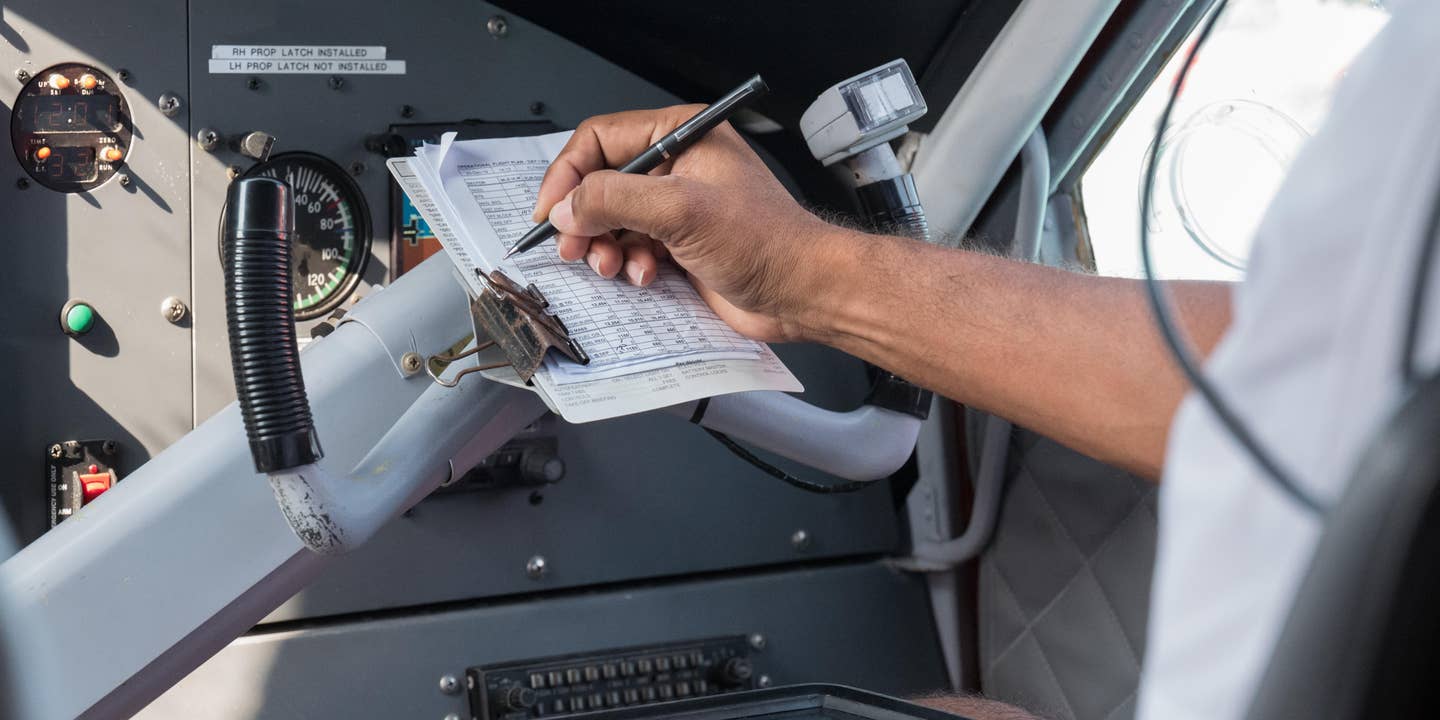Use Your Checklist
Knowing how and when and why to do things in the airplane starts with it.

Whatever stage of flying you are in, preflight checks before takeoff are a necessary element of your flight. [FLYING file photo]
Recently, I found myself writing about the crash involving veteran military and airshow pilot Dale “Snort” Snodgrass. According to the final NTSB report, the June 2021 loss of his SIAI Marchetti was attributed to failure to remove the control lock before initiating takeoff, resulting in an unrecoverable stall-spin scenario on takeoff. The fact that such an experienced pilot (with more than 6,500 hours and a career as a naval aviator) missed this item—which is usually one of the first things on the preflight checklist—should put the rest of us on notice.
It could happen to us—so follow that checklist like your life depends on it.
Ironically, a similar accident led to the adoption of checklists as a matter of practice in aviation. In 1935, the Boeing 299—the prototype of the B-17—went down on takeoff from Wright Field (what is now Wright-Patterson Air Force Base/KFFO) in Ohio. The aircraft lifted off normally, then entered a steep climb and subsequent stall and impact, killing the crew. It was determined that the control lock on the elevator and rudder, which could be released from inside the cockpit—were still in the locked position, having been forgotten by both the pilot and copilot. After the accident, the concept of a checklist to ensure the completion of these necessary tasks was born—and we still use it today. Does the phrase “flight controls free and correct” ring a bell?
Checklist use is one of the first things a pilot candidate learns. It is not a crutch—it is a device we use to make sure that necessary items are checked in a logical fashion. If you are interrupted during the checklist process—back up three items. Every time.
When you look at the checklist is also important, as in some high-workload situations such as the pattern, a cockpit flow followed by a verification look at the checklist may be more appropriate. A learner who drops the airplane to fly the checklist in the pattern (as if they are reading to see what they should do next) would likely benefit from a chair-flying session where, while safely on the ground, they run through the pre-landing checklist, recite power settings and aircraft configurations—and strive to understand the variables of the landing and how to address them.
Sometimes items are added to a checklist that are climate or airport specific—but the pilot may not learn this until they start flying at a different airport.
For example, the owner of a Cessna 150 moved to rural southwest Washington from a more metropolitan airport that was extremely noise sensitive. I was administering his flight review—he did well on the ground portion, so imagine my surprise on climbout as we reached 500 feet agl, when he (incorrectly) reduced the power of the 150 to 1,900 rpm. I asked for full power again. He pushed the throttle in but was puzzled, explaining he was following the noise-abatement policy which he thought was universal at all airports. I explained that this airport did not have such policies. He was delighted to add a line to the checklist—power reduction for noise abatement if appropriate.
A pilot who performs the landing by rote may do inappropriate things—such as adding full flaps when the aircraft is on final approach although there are four red lights—and, therefore, they’re below the glide path—”because the checklist says flaps 40 on final.”
Situations like this reveal there has been a failure to communicate in the learning process and/or something has become lost in translation.
A few years ago, I inherited a learner who swore that he had been taught to pull the mixture knob out to make the engine cough, then slam it back in to "check the mixture" on downwind. (I am pausing to visualize your facial expression as you process this.)
I pointed out that the checklist read "mixture rich or as required" and explained to him that pulling the mixture knob out deprived the engine of fuel, making it quit, and this was not something we would want to do in the air during normal operations.
Although the learner agreed that having the engine quit on downwind would be a bad thing, on that first pattern when he went to pull out the mixture knob my hand was right there, stopping him from pulling it out.
"Mixture rich, knob in!" I reminded him. The learner again insisted that he was taught to pull the mixture knob out on downwind “to check it.” I expressed skepticism.
On the second pattern, the learner slapped my hand away and got the knob. The engine momentarily quit, then came back as he shoved the knob back in.
"Wrong thing to do!" I said. "Do NOT do that again."
It was time to dig deep in the instructor bag. Desperate times call for desperate measures. As we climbed out on upwind, I started to work up the biggest mouth of spit I could. I cringe as I write this—as we turned crosswind to downwind, I hocked a loogie, and I mean a BIG OLE MAMA HOG loogie all over that mixture knob, in effort to keep him from grabbing it.
"That knob belongs to me now!" I said.
He was horrified and actually drew away from me. I guarded that knob anyway—and learning took place. He got off easy. I was prepared to shotgun boogers if I had too.

Sign-up for newsletters & special offers!
Get the latest FLYING stories & special offers delivered directly to your inbox






